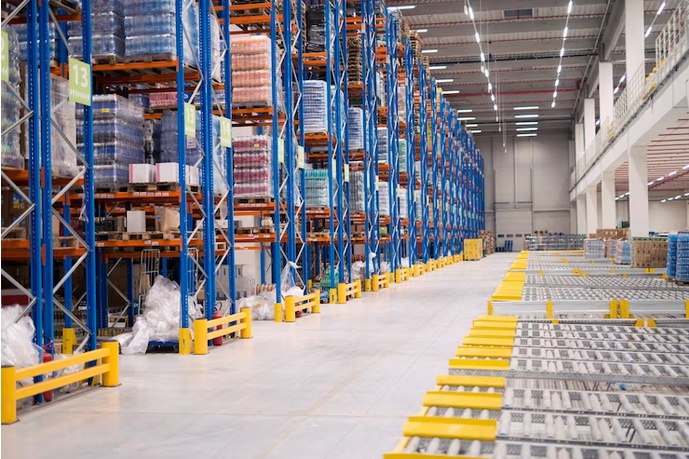In the intricate dance of supply chain logistics, warehouses are pivotal players, orchestrating the storage and movement of goods. An integral component of these operations is industrial pallet racking, a system designed to maximize space, streamline processes, and enhance overall efficiency. In this comprehensive guide, we explore the nuances of industrial pallet racking, unraveling its types, advantages, and strategic implementation for achieving optimal warehouse functionality.
Unveiling Industrial Pallet Racking
At its core, industrial pallet racking is a specialized storage system designed to accommodate palletized goods, providing a structured and space-efficient solution for warehouse storage. By utilizing a combination of horizontal beams and vertical uprights, this system creates a framework of shelves where pallets can be neatly organized, optimizing both floor space and accessibility.
Diverse Types of Industrial Pallet Racking Systems
-
Selective Pallet Racking: The workhorse of warehouse storage, selective pallet racking allows direct access to every pallet. This versatility makes it suitable for various product types, though it may not be the most space-efficient option.
-
Drive-In Pallet Racking: Tailored for high-density storage, drive-in racking permits forklifts to drive directly into the racks, eliminating the need for aisles. While ideal for products with low turnover rates, accessibility is limited.
-
Push Back Pallet Racking: Balancing selectivity with high-density storage, push back racking enables pallets to be stored multiple deep. As one pallet is retrieved, the next automatically moves forward, optimizing space utilization.
-
Pallet Flow Racking: This system incorporates inclined rollers or wheels, allowing pallets to flow from the loading to unloading end. It operates on a first-in, first-out (FIFO) basis, making it particularly suitable for perishable goods.
The Advantages of Efficient Industrial Pallet Racking Systems
-
Space Optimization: One of the primary benefits of industrial pallet racking is its ability to optimize vertical space. By utilizing the height of the warehouse, this system ensures efficient use of the available cubic footage, a crucial factor in warehouses where space is at a premium.
-
Enhanced Accessibility: A well-designed pallet racking system improves accessibility to stored goods. Quick and direct access to pallets reduces retrieval time, facilitating a smoother and more efficient workflow.
-
Safety Augmentation: Safety is paramount in warehouse environments. Properly installed and maintained pallet racking contributes to a secure working environment by preventing accidents and minimizing the risk of product damage.
-
Productivity Boost: Streamlined access and organized storage directly contribute to increased productivity. Warehouse staff can work more efficiently when they spend less time searching for products, leading to a more streamlined workflow.
Strategies for Optimizing Industrial Pallet Racking Efficiency
-
Routine Maintenance: Regular inspections and maintenance are imperative for sustaining an efficient pallet racking system. Identifying and addressing any damage or wear promptly prevents accidents and ensures the longevity of the system.
-
Strategic Product Placement: Classifying products based on turnover rates and placing fast-moving items in easily accessible locations reduces travel time for retrieval, optimizing overall efficiency.
-
Automation Integration: The integration of automation technologies, such as robotic palletizing systems, can further enhance efficiency. These systems operate 24/7, increasing throughput and reducing labor costs.
-
Advanced Inventory Management: Implementing advanced inventory management systems that provide real-time data on stock levels and movement allows for better decision-making and helps prevent stockouts or overstock situations.
-
Employee Training: Ensuring that warehouse staff is adequately trained in pallet racking best practices is essential. This includes proper loading and unloading procedures, as well as safety protocols to prevent accidents.
Conclusion
In the complex tapestry of modern warehouse operations, the efficiency of industrial pallet racking emerges as a linchpin for success. This storage system, with its diverse types catering to different needs, brings forth a blueprint for optimal warehouse functionality. By leveraging the advantages of space optimization, enhanced accessibility, safety augmentation, and productivity boosts, industrial pallet racking systems pave the way for seamless supply chain logistics. Incorporating strategies like routine maintenance, strategic product placement, automation integration, advanced inventory management, and employee training ensures the sustained efficiency of the pallet racking system. As warehouses evolve to meet the demands of an ever-changing market, embracing the principles outlined in this guide becomes imperative for those striving for excellence in warehouse operations.


No comments yet